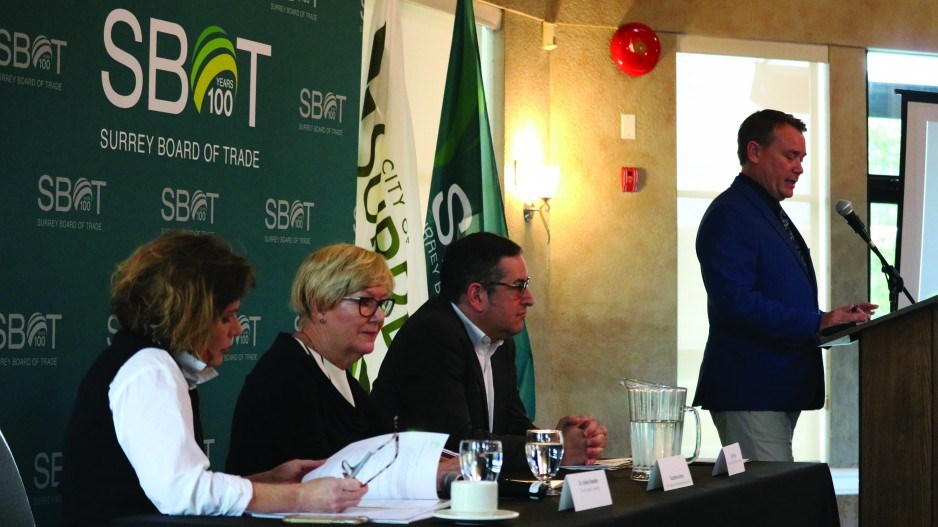Should British Columbians change B.C.’s voting system to proportional representation this fall, businesses should not worry too much that it will result in higher deficits, higher taxes and more regulations, according to Simon Fraser University economics professor Anke Kessler.
There is little evidence that proportional representation (PR) – which fosters coalitions and political horse-trading – is any worse for businesses than the current first-past-the-post (FPTP) system, Kessler said.
But businesses might have legitimate concerns about other aspects of PR systems.
For one, B.C. would likely never have another majority government. The fear there is that governments can’t get things done without the strong governing mandate that majority governments provide.
For another, PR can fragment political parties, usher in mongrel coalitions of strange political bedfellows and bring about more frequent elections and periods where there might be no government.
On the other hand, businesses don’t like it when governments move goalposts, and moving to PR might put an end to the “seismic swings” and “policy lurches” that result under FPTP, when new governments reverse many policies of the old one, said Seth Klein, director for the Canadian Centre for Policy Alternatives.
“It’s inefficient and it’s bad for business,” Klein said. “Imagine if you’re a clean-energy … business person in Ontario and you’ve invested millions, only to have the new [Doug] Ford government completely undo the policy context on which your business was based.”
Between Oct. 22 and Nov. 2, British Columbians will be asked to vote, by mail-in ballot, whether to stick with the current system or switch to some form of PR, three variations of which will be on the ballot.
Whether such a switch would be good, bad or neutral for business was the topic of discussion last week hosted by the Surrey Board of Trade.
Klein argued for the pro-PR side, while Suzanne Anton, a former BC Liberal MLA who has teamed with longtime BC NDP strategist Bill Tieleman on the No Proportional Representation Society of BC, argued against switching.
One of the concerns for business is that PR could result in a succession of minority governments and coalitions, and the resulting horse-trading could bring in more spending, higher taxes and deficits.
“There’s no question that the studies show that proportional representation governments cost more,” Anton said, adding the difference is 23 per cent of gross domestic product under FPTP, compared with 29 per cent under PR.
But Kessler said it’s not necessarily the case that PR governments result in higher taxes and deficits.
“If you look at the overall economic performance of countries and you ask yourself, ‘Are taxes positively related to the electoral system? Are deficits positively related to the electoral system or government spending?’ the answer may be a surprising ‘No,’” Kessler said. “We cannot find any plausible relationship.”
PR proponents argue that the current system is unrepresentative because it often results in a political party winning a majority of seats without winning a majority of the popular vote.
Proportional representation means that the makeup of a legislature or parliament more directly reflects the will of the voting public.
As Business in Vancouver calculated in an analysis in June, under a PR scheme, the BC Green Party would have won 15 seats in the last election, not three, and the BC NDP and BC Liberals would have been tied, with 36 seats each.
FPTP systems are the exception in the world. The U.S., the U.K., Canada and India are the only developed countries without PR. Most other countries have some form of proportional representation.
The problem for B.C. is that two of the three PR systems that voters are being asked to choose from – dual-member and rural-urban – have never been implemented anywhere.
“Some of the systems that we have on the ballot have never been tried, and that’s not good,” Kessler said.
Anton said one of the reasons B.C. voters rejected the single transferable vote in 2009 was that they could see how the electoral maps would change and didn’t like what they saw.
Under the proposals now before B.C. voters, no one knows how the maps would change. In Surrey, for example, the current nine constituencies could be melded into two, with four to five MLAs for each riding, depending on which system is used.
Should B.C. move to a PR system, it would have two election cycles to try it out. Another referendum would then be held, giving voters the option of returning to FPTP.
– Nelson Bennett, Business in Vancouver



